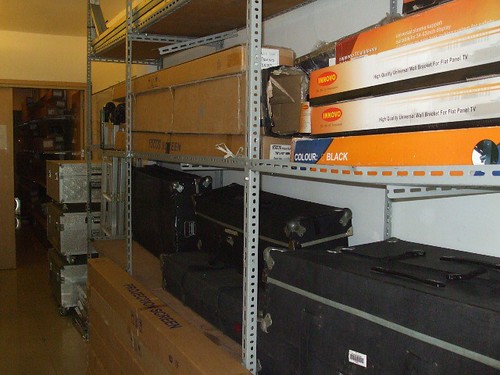
Image : http://www.flickr.com
Want to buy a high-def TV but just don't know how to figure out the specifications to choose the best sets? Here's a short guide to some of the most common specs you'll be faced with.
Contrast ratings - a measurement of the darkest blacks to the lightest whites - Panasonic boasts of a 18000:1 contrast rating for their best plasma. In nearly every case, you'll find that plasma TVs have better contrast ratings than any other high-def TV, but you don't necessarily need off-the-charts contrast ratings to have a television you'll enjoy. An 1800:1 makes most people happy, and in a darkened room you often can't tell much difference, though it will be obvious in a showroom.
1080p and 1080i - These numbers refer to the horizontal lines that make up your television image. Traditional televisions - and traditional TV broadcasts - have a 480i; most modern high-def TVs have 1080 or better. The p and i refer to the method the television uses to interpret these lines. An i is an interlaced picture, where every other line refreshes, usually every 1/60 of a second. A p displays all the lines at once, and refreshes either every 1/60 or 1/30 of a second. Look for sets that have a high number and the p for best pictures. Also, for best results look for Blu-ray sets that match this number for your television; some televisions designed for interlaced images cannot handle a Blu-ray set only for p.
Scaling - Refers to the ideal resolution for your television's picture. This is more important for a front-projection DLP TV than any other set, as it determines the maximum and minimum picture for good viewing.
Artifacts - Auras, ghost images, sharp edges, and other distracting things that can detract from your high-def TV's good image processing. A television reviewed as having few or no artifacts is always better than one that has some complaints.
De-judder processing - this refers to the sometimes-jerky motion when frames change too slowly. Because high-def TVs are in essence computing devices, this depends heavily on internal processor speed as well as good programming at the factory. Some experts complain that certain sets do too good a job at de-juddering, and as a result the image is unnaturally smooth in motion. Most consumers are happier with this sort of set, though, so the better your de-judder is the happier you will probably be.
Resolution - Most sets have at least 1920 x 1080 resolution, referencing the vertical x horizontal lines your set will display. High resolutions indicate better pictures, provided everything else works well.
Color-temperature presets -- With values like Cool1 and Neutral, these presets skew your television's color settings toward blues or reds. These settings are not necessarily a make-or-break thing for your high-def TV, but it's nice to be able to skew your picture without fiddling with every color setting. Most high-def TVs have many other color settings you can mess around with, but none of them are critical.
There are several other specs, with more being created every day, but these should help you choose a great high def TV for your needs.
Related : Technology 3d television TV buying guide
